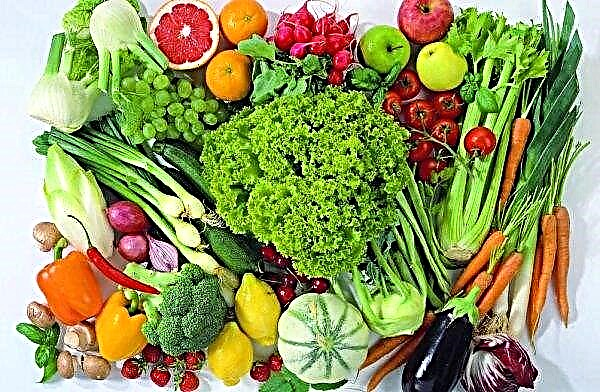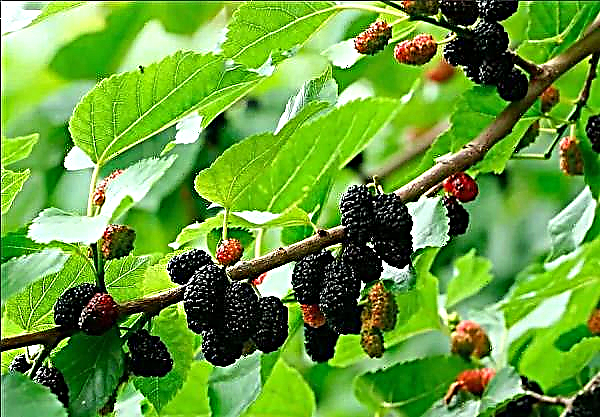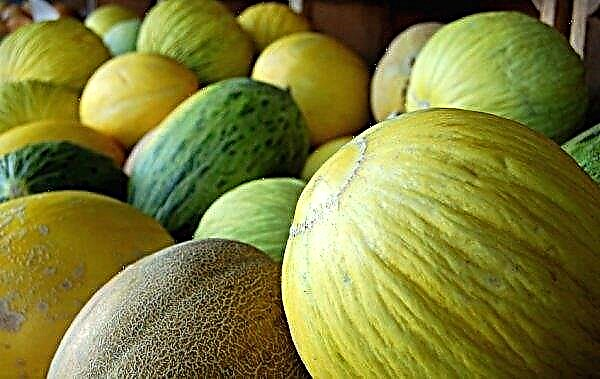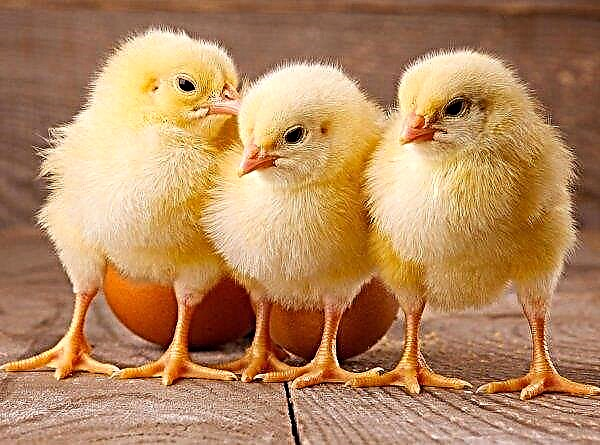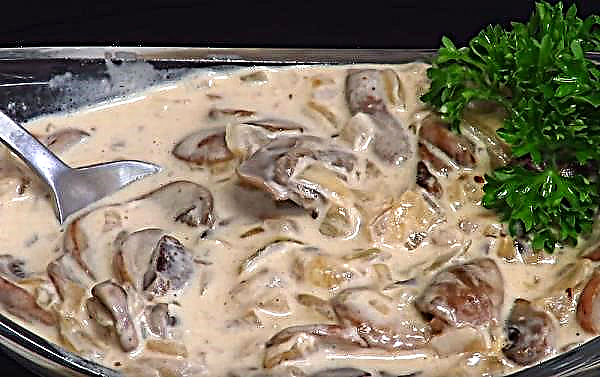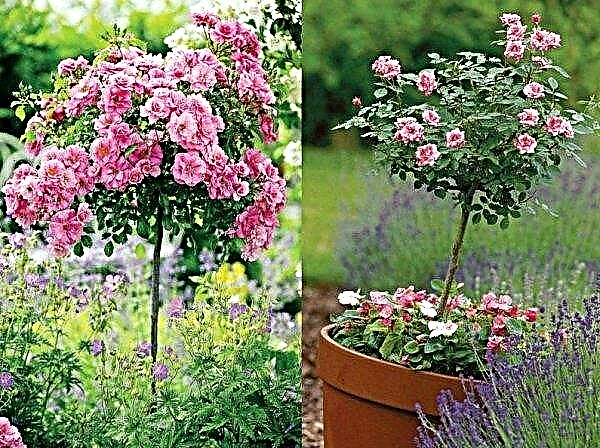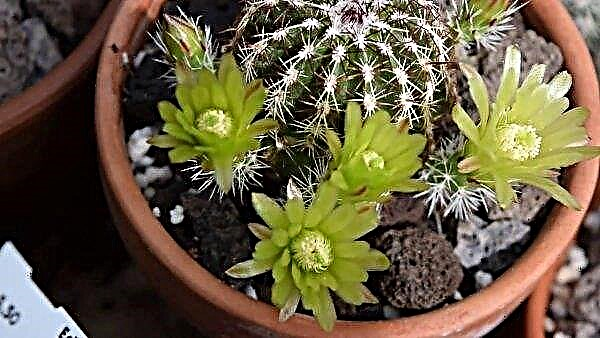Onions are one of the most consumed vegetable crops; there is practically not a single first or second dish where it would not be used. The yield of a vegetable depends on the conditions of its cultivation and care, more about this in detail in this article.
Important! Marigolds planted in the aisles will protect the plant from the main pest - the onion fly.
Crop yield
Onions for turnips and greens are grown not only in personal plots, but also in large farms. Of course, farmers and summer residents are interested in the issue of vegetable productivity.
So, here is the amount you can collect:
- from 1 ha - 150–270 centners;
- from 1 hundred parts - 200-350 kg.

The amount depends on varietal characteristics, The following varieties are considered the best in yield:
- Early farmer;
- Edelweiss;
- Supra;
- Setton;
- Snowball;
- Chalcedony.
Did you know? In the time of the dense Middle Ages, peasants and townspeople considered the bulb as a charm from witchcraft, and warriors — from getting wounds in battle.
How to increase performance
Average yield values can always be increased by observing a number of simple techniques:
- The soil - unsuitable for growing: marshy, clay, sour. Suitable soil is fertile, loose, with a reaction of 7.5-8 pH. Too acidic soil is adjusted to the desired performance by adding 300 g / m² of lime.
- Crop rotation - Do not plant after many early root crops, sunflowers and other onion crops. Ideal precursors for vegetables are cabbage, greens (except dill), pumpkin and early vegetables.
- Neighbors - the bad neighbors for onions that oppress it are legumes and sage.
- Significantly increases both size and taste qualities, and the amount of the crop; the application of potash and phosphorus fertilizers.
- Excess nitrogen reduces the density of the bulb and its durability, therefore organic matter is not used as top dressing.
- Growing efficiency depends on Sufficient moisture, heat and lighting. The choice of site for landing should be approached carefully.

Basic rules for growing and caring for onions
The crop area should be protected from the winds, as the green arrows break, losing their presentation. There should not be any trees creating a shadow near, onions like bright lighting. For planting, the soil on the site is prepared in the fall. It should not have any plant debris. Digging, compost 2 kg / m², wood ash 0.5 kg / m² are introduced into the ground. Fresh manure or droppings is not recommended - because of them, the vegetable is sick and matures poorly.
Did you know? Bulb juice will help relieve inflammation and swelling, pain during a bee or wasp sting.
Sowing seeds is carried out by the tape method, sowing is sown at a distance of 2-3 cm from each other. Watering of seed crops is carried out with an interval of 2-3 days, sowing is watered once a week. After watering, be sure to loosen the planting and weed from weeds. A month before harvesting, watering should be stopped. After the plant reaches a height of 15 cm, prophylaxis against pests and diseases is carried out. Planting is sprayed with copper sulfate with soap diluted in water in a ratio of 1 tbsp. l. / 10 l.
They feed the culture 2 times per season:
- when the green leaves - 60 g of ammonium nitrate, 100 g of superphosphate and 20 g of potassium chloride per 1 hundred parts;
- during bulb formation - 60 g of superphosphate and 40 g of potassium chloride per 1 hundred parts.

Onions are grown in two ways, each of them has its own advantages:
- seminal - no need to wait a year to get the crop, less risk to plant contaminated material (especially if it is purchased);
- sevkom - more suitable for sandy soils, seeds may not hatch. Onions grown in the north have the best quality of onion density and yield.
Important! If you store onions in cooler conditions, there is a high probability of rifle sevka.
Planting Material Storage Tips
Harvest must be correctly harvested, and the selected seeds must be sent for storage correctly. Collection begins in late July, early August, depending on the region. The signal is the yellowing of the green part and the upper scales of the bulb. Cleaning is carried out in dry weather. The collected sevok must be dried before laying for storage. For this, planting material is laid out under a canopy in the fresh air or in a ventilated room. Drying time is about a month. Qualitatively dried sevoc is distinguished by a tight fit of scales on the neck. Next, you need to sort, in order to select high-quality material for planting. Sowing is ideal, not exceeding 3 cm in diameter. The material is stored in dry, dark rooms with good ventilation.
Qualitatively dried sevoc is distinguished by a tight fit of scales on the neck. Next, you need to sort, in order to select high-quality material for planting. Sowing is ideal, not exceeding 3 cm in diameter. The material is stored in dry, dark rooms with good ventilation.
Onions are placed in wooden boxes with a layer of up to 30 cm or in bags made of natural fabric. Storage temperature - + 18 ... + 21 ° С. Onions are one of the most important cultures in our culinary tradition; a vegetable, among other things, also has healing properties. Growing onions is not a time-consuming process, but to obtain a qualitative and quantitative crop, you must follow the rules of agricultural technology.



